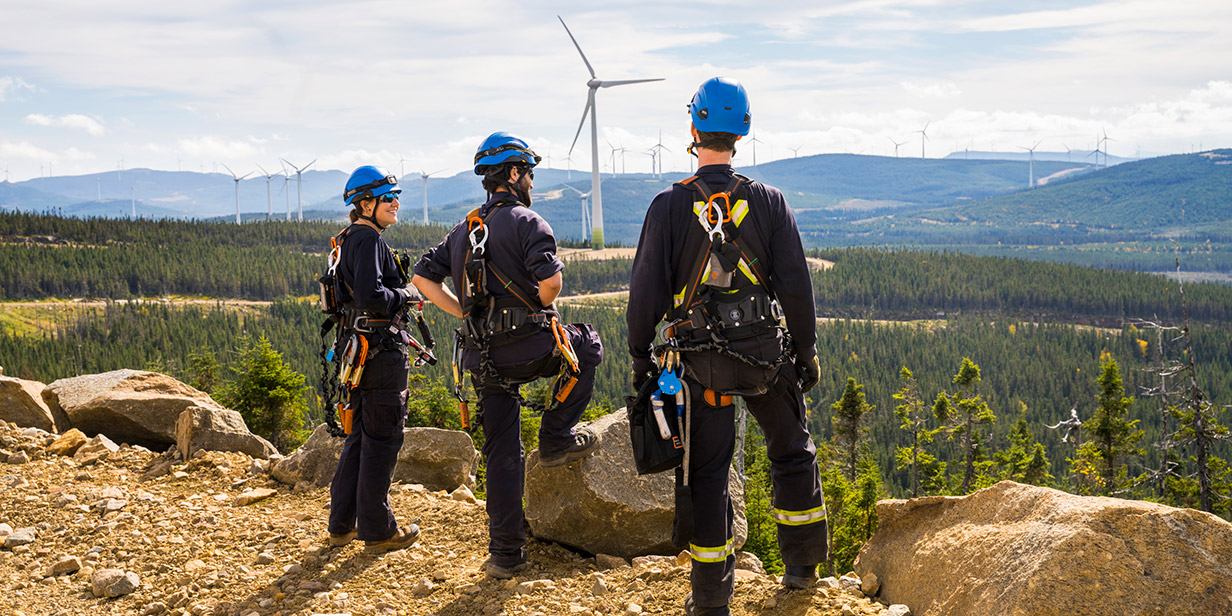Boralex and FM: A partnership driving innovation in renewable energy

Renewable energy developer Boralex was founded in Canada 35 years ago with a mission to do things differently.
Boralex builds its wind, solar, battery and hydro projects for the long term. It relies on strong in-house engineering capabilities and adaptability. And above all, it develops enduring partnerships, whether that’s with its host communities, its suppliers or FM. From origination to decommissioning, Boralex is there every step of the way.
It's the sort of approach that has allowed Boralex to succeed—even when lightning strikes. Which, in the world of wind turbines, is a prominent and quite literal risk. Some 80% of turbine damage is caused by lightning. When Boralex has faced lightning and other challenges, it has leaned on its partnerships and its founding principles to come out stronger.
In doing so, it's helping set the standard in the renewables industry.
“The pace of change in the renewable energy industry is fast, and that transfer of knowledge has been key to our shared success,” said Walid Ayon, the FM account manager for Boralex.
One occasion for this transfer of knowledge came after lightning damaged a turbine blade at one of Boralex’s wind power projects in Canada.
Each turbine is equipped with complex systems of insulation, drains and other protective measures. But on that occasion, the lightning protection system (LPS) did not work. FM and Boralex worked together to figure out why. They concluded that clogged drain holes resulted in water collecting in the blade, which made it vulnerable to lightning.
But Boralex wasn't content to simply file a claim and wait for lightning to strike again. In fact, even before the loss, Boralex and its rotor blade expert Mohamed Yahyaoui were working on enhancing the company’s turbine inspection program. These inspections involve cameras, drones and a robot to inspect the blade inside and out, including its LPS and the drain holes.
After a new round of inspections under this newly strengthened program, Boralex found other drain hole issues in its fleet. That allowed the company to fix minor problems before lightning could strike again.
Boralex hasn’t experienced a similar loss since.
“It’s a sign that the LPS since the one claim is working well,” said Boralex’s risk manager, Vincent Parizeau.
These new inspections were helpful not just in Boralex’s native Canada, nor in the markets where it now has activities, including the United States, France and the United Kingdom. It also influenced Boralex’s insurer: FM has since incorporated drain hole inspections into its recommendations to the entire industry.
“That’s what a true partnership is,” said FM’s Ayon.
Ayon now works for FM Renewable Energy, which launched in 2024 to help companies like Boralex, and the entire renewables industry, develop strategies for long-term resilience and reliability.
Those resilience strategies would come into play yet again for Boralex a few years after the lightning strike. This time, Boralex started to receive troubling gas readings on a transformer that feeds power from its turbines into the transmission system.
Boralex’s team reduced the amount of power that was flowing through that transformer and routed the rest to one of the other transformers on site. Boralex also quickly started working on getting a new transformer, while working with FM to determine the root cause.
“They were very open to working with us to mitigate the loss and to prevent a failure of the transformer,” said Maxime Simard, a senior engineering specialist at FM.
FM’s claims adjuster, Marie-Claude Leblanc, went out in person to see the faulty transformer, just as she’d done for the earlier lightning damage claim. In claims, open communication, transparency and getting out on site quickly are all keys to success.
“We became a trusted partner for them,” said Leblanc.
In the meantime, the faulty transformer continued to degrade even further. Boralex’s engineers found a way to route the power using a temporary cable from the faulty transformer to the other two on site, minimizing the disruption.
FM and Boralex eventually concluded that the problem was caused by arcing in the transformer. The underlying causes weren’t significant, but “you can’t get away with anything at those voltage levels,” said Jonathan D’Amours, engineering team lead for Boralex.
The new transformer arrived in about a year, a remarkably short time frame that served as a testament to Boralex’s capabilities—and its way of doing things differently.
“It was a win-win,” said Parizeau. “It shows how agile we were, to find solutions to mitigate the loss.”
